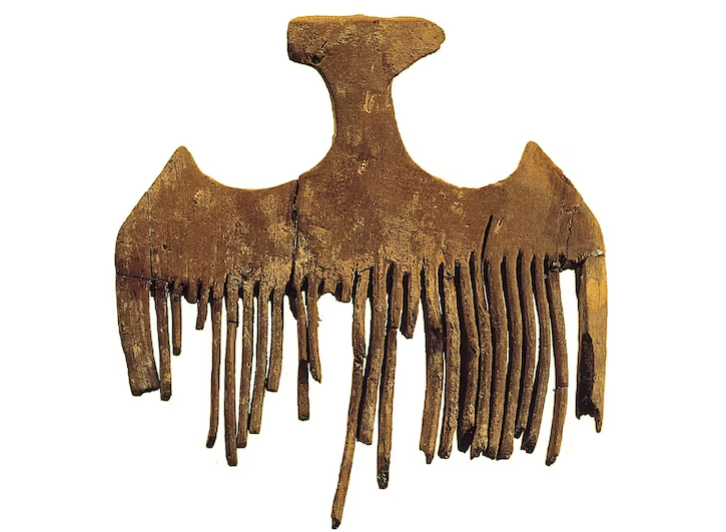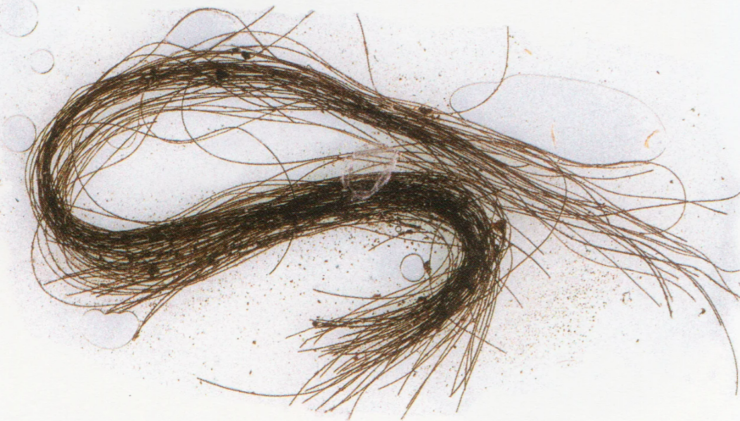Strands of human hair from around 3,000 years ago were found to have remnants of alkaloid compounds, which are molecules that come from plants and are known to alter perception and cause delirium and euphoria. The hairs were discovered by researchers in the burial cave Es Càrritx in Menorca, one of the Balearic Islands off the eastern coast of Spain in the Mediterranean Sea, together with other funerary objects.
Ephedrine, a stimulant, was found in the hairs after a chemical examination. Atropine and scopolamine, two psychoactive substances that can cause dizziness, sensory disruption, and vivid hallucinations, were also found after analysis, according to a report published in the journal Scientific Reports.
Based on hints previously found in Eurasia and the Americas, it is known that humans have used drugs for thousands of years. But until now, there has been no proof that people in prehistoric communities consumed the plants, according to lead study author Elisa Guerra-Doce, an associate professor of prehistory at the University of Valladolid in Spain. With these new findings, “we are presenting the earliest evidence of drug consumption in European prehistory.”
Es Càrritx was discovered in 1995; its entrance is approximately 82 feet (25 meters) from the top of a cliff, and it contains seven chambers. It served as a cemetery area from 1400 BC to 800 BC, during which time more than 200 male and female adults and children were interred there. When they found it in 1995 in a gorge on the Mediterranean island of Menorca, the cave contained more than 200 intact burials dating from roughly 1600 to 800 BC and spanning multiple generations.
But some of the bodies turned out to be special. Fragments such as the wooden comb found at Es Càrritx and research show that after the body was brought into the cave, the hair was dyed red, the strands carefully combed, cut and then sealed in closed tubes made of horn or wood. In burial sites where this ritual was performed, these containers were placed next to the bodies. But at Es Càrritx, 10 of these vessels – along with other funerary artifacts – were stored in another room.



The reddish hair in the tubes was up to 5.1 inches (13 centimeters) long. The researchers separated the components of the hairs chemically, then identified the molecules by the mass of their ions. The compounds that they detected are all produced by plants that grow on Menorca, such as devil’s snare (Datura stramonium), mandrake (Mandragora automnalis), white henbane (Hyoscyamus albus) and joint pine (Ephedra fragilis).
According to Dagmara Socha, a researcher at the Center for Andean Studies at the University of Warsaw, Poland, the images produced by scopolamine and atropine ingestion are “violent and unpleasant” can be. Socha researches the ancient use of mind-altering compounds and recently announced the discovery of psychoactive drugs in an ancient head of a Nazca child sacrificed in Peru. Scopolamine and atropine are found in plants of the genera Datura and Brugmansia, both in the nightshade family, and were used in pre-Columbian South America, she said.
Even today, the Chibcha people, an indigenous group living in Colombia, use an infusion of Brugmansia for slaves and the wives of dead lords to dull their senses while they are buried alive during funeral rites.
In the indigenous Shuar communities of the Amazon, disobedient children were disciplined by making them drink a juice made from Brugmansia flowers called maikua. During the trance, the youngsters communicated with their ancestors and learned to respect their elders, Socha said. She also said that the Mayans and Aztecs in Mesoamerica used Datura stramonium as an aphrodisiac.



Because the tubes containing the hair in the Es Càrritx cave were found in a closed room that had not been touched since 800 BC, it is unlikely that the compounds entered the site through contamination. Analysis along the length of the hair strands suggests that drug consumption occurred about a year before death.
The discoveries at Es Càrritx also shed light on how ritual drug use may have defined certain roles in prehistoric European societies.
Guerra-Doce said that because only some of the individuals in the burial chamber had their hair dyed, cut and preserved, they may have had a special status linked to their use of psychoactive plants.
“We suggest that maybe there were certain people — religious specialists — who controlled their use of these drugs, all this evidence made it seem that maybe certain individuals deserved this hair treatment, and those individuals were the ones who consumed the drugs. But for now, that conclusion is just a hypothesis. we’d have to carry out more analysis on different individuals.” she added.
